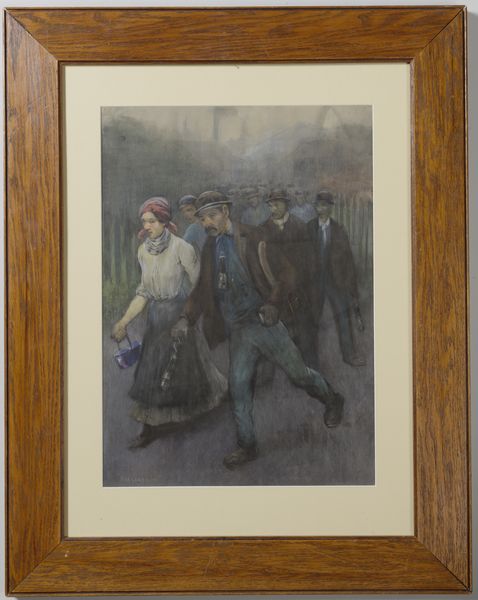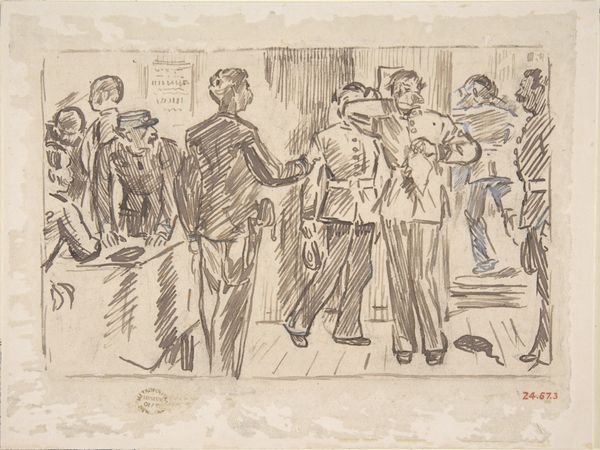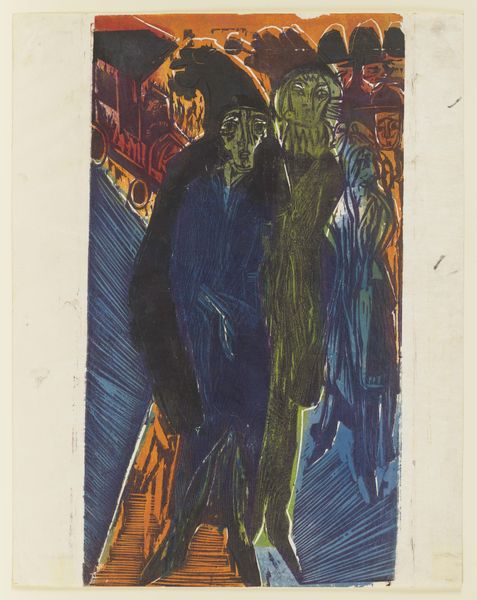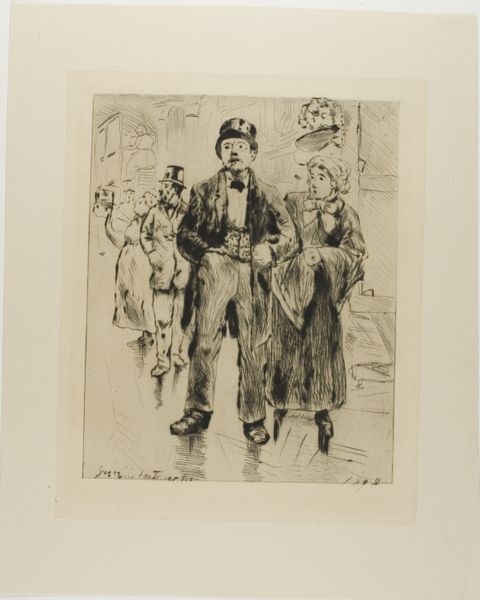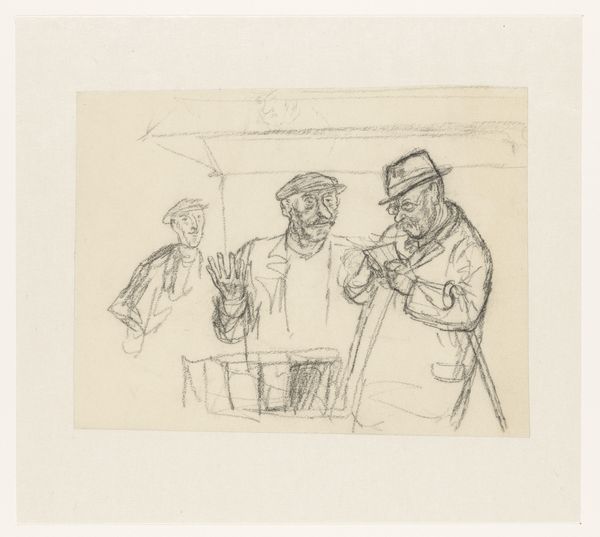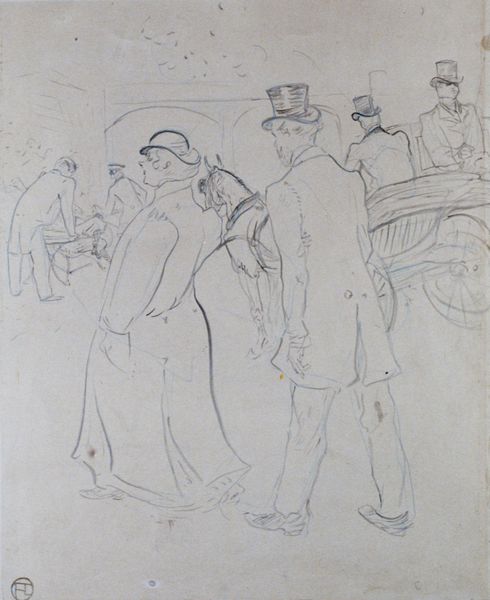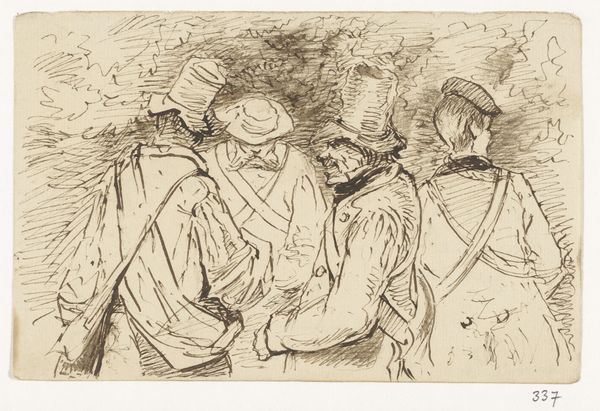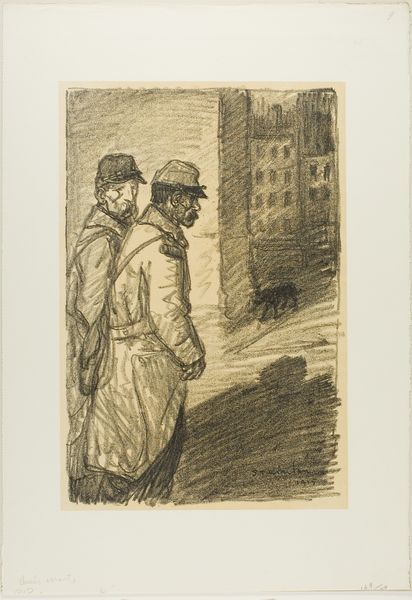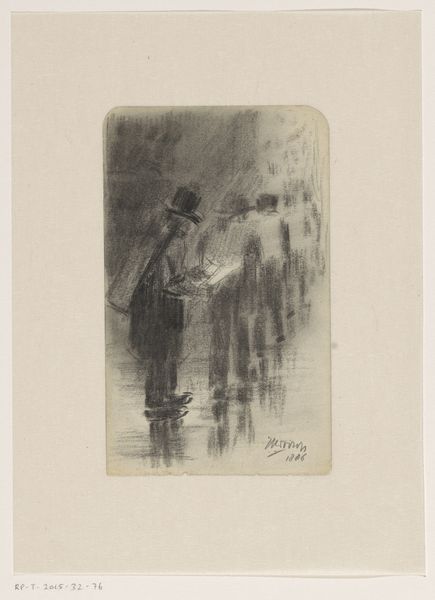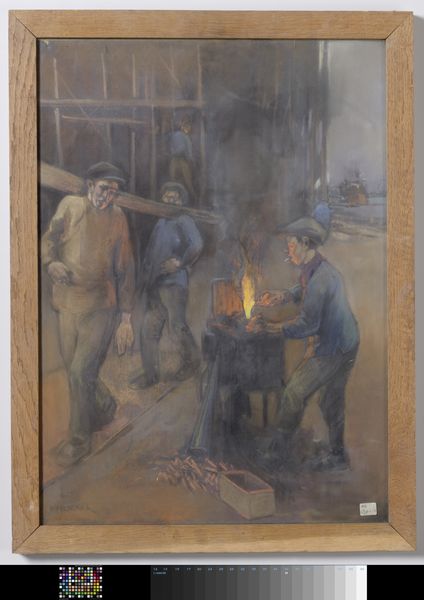
drawing, pencil
#
portrait
#
drawing
#
dutch-golden-age
#
group-portraits
#
pencil
#
genre-painting
#
portrait art
#
realism
Dimensions: height 31.5 cm, width 25 cm, height 53 cm, width 38 cm, depth 2 cm
Copyright: Rijks Museum: Open Domain
Curator: Herman Heijenbrock’s drawing, "De mijnlampenist," likely created between 1900 and 1930, presents a somber scene of miners. It is a powerful portrayal done in pencil. My initial reaction is a deep sense of empathy. Editor: And it's impossible not to feel it. Heijenbrock has captured a scene laden with social commentary. The artist really emphasizes the human toll of labor, reflecting the era's growing worker consciousness, right? Curator: Absolutely. The way he’s rendered the light, those tiny lamps flickering against the darkness, it’s almost a metaphor for hope flickering in the face of relentless hardship. You can almost feel the dampness of the mine shaft. And consider the portraits. Editor: Speaking of portraits, each face tells its own story of the class struggles of this industrial age. The darkness seems to envelop them, representing the oppressive conditions they toiled under daily. You sense their camaraderie, forged in shared difficulty, through the closeness of the figures and gestures. Curator: Their exhaustion, right? That's etched into their very being. Heijenbrock wasn't just depicting a profession, he was illuminating a reality of these workers and celebrating that labor. I appreciate how Heijenbrock’s realism does not shy away from the grimness, yet finds dignity and resilience within these subjects. Editor: True. It's a raw and poignant visual statement. I think his work resonates with the calls for fair labor laws and social justice movements. It really pushes one to ponder the legacy of industrial labor and how it continues to shape our societies. Curator: Exactly, their toil built the world. It really does leave you thinking about the legacy we are forging ourselves. Editor: And to whom we’ll leave it.
Comments
No comments
Be the first to comment and join the conversation on the ultimate creative platform.

